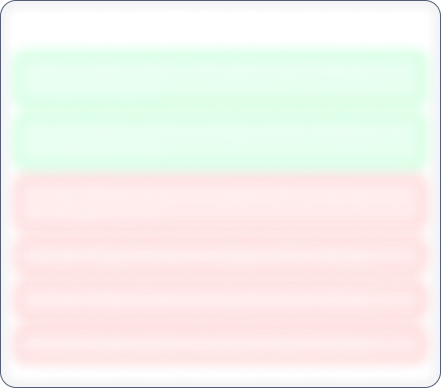Festive Sale – 50% Off!
Quest Flow Controls

No Data Available
Investor Sentiment
Quest Flow Controls Share price and Fundamental Analysis
Key Metrics
Stock Returns
Stock Heatmap

No Stocks
Smart Score

Unlock Smart Score
See Detailed Analysis & Insights


Unlock Insights
See Detailed Analysis & Insights
Technicals
Returns Calculator
If you would have investedResearch Report
No Research Report
Corporate Action
Financials
Key Ratios
ROE
Avg ROE (3 Yrs) : NaN%
ROCE
Avg ROCE (3 Yrs) : NaN%
ROA
Avg ROA (3 Yrs) : NaN%
NPM
Avg NPM (3 Yrs) : NaN%
Dividend History
5 Year FactSheet
Documents

No Data Available
News
Quest Flow Controls Management and History
Company Management


Unlock Management Data
See Detailed Analysis & Insights
Company History
Meson Valves India Ltd was originally incorporated under the name 'Sander Meson India Private Limited' under vide Certificate of Incorporation dated August 18, 2016 issued by the Central Registration Centre for and on behalf of the jurisdictional Registrar of Companies. Subsequently, the name of company was changed to 'Meson Valves India Private Limited' dated May 15, 2019. Subsequently, status of the Company was changed to public limited and the name was changed to 'Meson Valves India Limited' through fresh certificate of incorporation issued on May 04, 2023, by the Registrar of Companies, Goa, Daman & Diu.
The Company is promoted individually by Swaroop Raghuvir Natekar, Brijesh Madhav Manerikar & Vivekanand Maruti Redekar , possessing an average experience of more than 6 years in the field of supply of valves, actuators, Strainers and remote-control valves systems. The Company is engaged in the business of assembling, buying, selling, distributing, importing, exporting or otherwise dealing in products like valves, actuators, Strainers and supply of remote control system, control cabinets, tanks, visualization system, piping, pumps, fittings, gaskets, flanges and measurement devices. The Company deal in installation, maintaining, servicing or otherwise handling of equipment and services that control and manage all products like valves, actuators, remote control system, control cabinets, tanks, visualization system, piping, pumps, fittings, gaskets, flanges and measurement devices.
The Company operate assembly unit in Pune, Maharashtra, which is well equipped with CNC machines, all necessary Fixtures for assembly and test machinery for quality assurance, other handling Equipment's to facilitate smooth assembly process and easy logistics. It procure products for further assembly and supply from various coutries across the globe such as Denmark, Germany, Poland, South Korea, Netherlands, Sweden, Turkey and United Arab Emirates and in the domestic market, they procure the products from states such as Goa, Gujarat, Maharashtra, Karnataka, Tamilnadu, Andhra Pradesh, Dadra and Nagar Haveli, Delhi and Telangana based on puchases made. The Company set up Assembly unit at Goa in year 2016.
The Company is proposing an initial public offer of 30,48,000 equity shares aggregating to Rs 31.08 crore.
Quest Flow Controls Share Price
Quest Flow Controls share price reflects investor sentiment toward the company and is impacted by various factors such as financial performance, market trends, and economic conditions. Share price is an indicator which shows the current value of the company's shares at which buyers or sellers can transact.
Quest Flow Controls Market Cap
Market capitalization of Quest Flow Controls indicates the total value of its outstanding shares. Marketcap is calculated by multiplying share price and outstanding shares of the company. It is a helpful metric for assessing the company's size and market Valuation. It also helps investors understand how Quest Flow Controls is valued compared to its competitors.
Quest Flow Controls PE Ratio
Quest Flow Controls PE ratio helps investors understand what is the market value of each stock compared to Quest Flow Controls 's earnings. A PE ratio higher than the average industry PE could indicate an overvaluation of the stock, whereas a lower PE compared to the average industry PE could indicate an undervaluation.
Quest Flow Controls PEG Ratio
The PEG ratio of Quest Flow Controls evaluates its PE ratio in relation to its growth rate. A PEG ratio of 1 indicates a fair value, a PEG ratio of less than 1 indicates undervaluation, and a PEG ratio of more than 1 indicates overvaluation.
Quest Flow Controls ROE (Return on Equity)
Return on Equity (ROE) measures how effectively Quest Flow Controls generates profit from shareholders' equity. A higher ROE of more than 20% indicates better financial performance in terms of profitability.
Quest Flow Controls ROCE (Return on Capital Employed)
Return on Capital Employed (ROCE) evaluates the profitability of Quest Flow Controls in relation to its capital employed. In simple terms, ROCE provides insight to investors as to how well the company is utilizing the capital deployed. A high ROCE of more than 20% shows that the business is making profitable use of its capital.
Quest Flow Controls Total Debt
Total debt of Quest Flow Controls shows how much the company owes to either banks or individual creditors. In simple terms, this is the amount the company has to repay. Total debt can be a very useful metric to show the financial health of the company. Total debt more than equity is considered to be a bad sign.
Quest Flow Controls Debt to Equity Ratio
The Debt-to-Equity (DE) ratio of Quest Flow Controls compares its total debt to shareholders' equity. A higher Debt to Equity ratio could indicate higher financial risk, while a lower ratio suggests that the company is managing its debt efficiently.
Quest Flow Controls CAGR (Compound Annual Growth Rate)
CAGR shows the consistent growth rate of Quest Flow Controls over a specific period, whether it is over a month, a year, or 10 years. It is a key metric to evaluate the company’s long-term growth potential. Main metrics for which CAGR is calculated are net sales, net profit, operating profit, and stock returns.
Quest Flow Controls Technical Analysis
Technical analysis of Quest Flow Controls helps investors get an insight into when they can enter or exit the stock. Key components of Quest Flow Controls Technical Analysis include:
Support Levels (S1, S2, S3)
There are usually multiple support levels, but the main support levels for a stock are S1, S2, S3. Support levels indicate price points where stock might get support from buyers, helping the stock stop falling and rise.
Resistance Levels (R1, R2, R3)
There are usually multiple resistance levels, but the main resistance levels for a stock are R1, R2, R3. Resistance levels represent price points where Quest Flow Controls shares often struggle to rise above due to selling pressure.
Quest Flow Controls Dividends
Dividends refer to the portion of the company’s profits distributed to its shareholders. Dividends are typically paid out in cash and reflect Quest Flow Controls ’s financial health and profitability.
Quest Flow Controls Bonus Shares
Bonus shares are usually given by companies to make the stock more affordable, increase liquidity, boost investor confidence, and more.
Quest Flow Controls Stock Split
Stock split increases the number of its outstanding shares by dividing each existing share into multiple shares. When the company offers a stock split, the face value of the stock reduces in the same proportion as the split ratio.
Quest Flow Controls Financials
The financials of Quest Flow Controls provide a complete view to investors about its net sales, net profit, operating profits, expenses, and overall financial health. Investors can analyze financial data to assess the company’s stability and also understand how the company has been growing financially.
Quest Flow Controls Profit and Loss Statements
The profit and loss statement of Quest Flow Controls highlights its net sales, net profit, total expenditure, and operating profits in the current financial year. This Profit and Loss statement is crucial for evaluating the profitability and financial stability of Quest Flow Controls .
Quest Flow Controls Balance Sheet
The balance sheet presents a snapshot of Quest Flow Controls ’s assets, liabilities, and equity of shareholders, providing insights into the financials of the company.
Quest Flow Controls Cashflow Statements
Cashflow statements track the company's cash inflows and outflows over a period. It is an essential tool for understanding how well the company manages its liquidity and finances.


